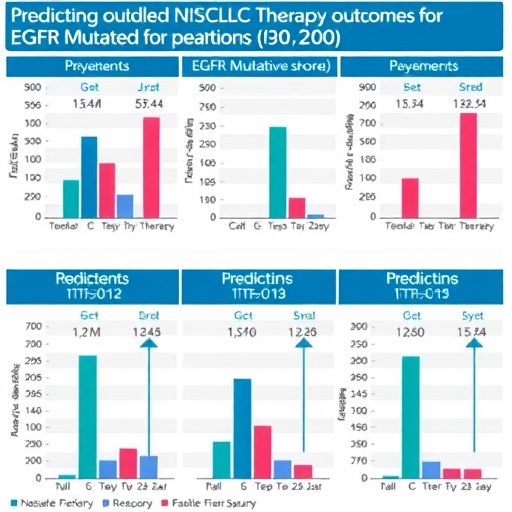Bottom Line: Recurrence of head and neck squamous cell carcinoma (HNSCC) negative for human papillomavirus (HPV) following radiation therapy was associated with high tumor levels of the protein PD-L1.
Journal in Which the Study was Published: Clinical Cancer Research, a journal of the American Association for Cancer Research.
Author: Heath D. Skinner, MD, PhD, assistant professor in the Department of Radiation Oncology at The University of Texas MD Anderson Cancer Center, Houston.
Background: According to Skinner, infection with certain types of HPV can cause some cases of HNSCC, but many cases are HPV-negative and patients with this form of the disease have particularly poor outcomes following treatment.
He also explained that radiation forms the backbone of curative treatment of HPV-negative HNSCC but that 30 to 50 percent of patients go on to have local disease recurrence and ultimately die from their disease following this treatment.
In this study, Skinner and his colleagues focused on identifying and validating potentially targetable biomarkers to potentially improve survival for patients with HPV-negative HNSCC.
How the Study Was Conducted and Results: The researchers started by identifying proteins whose levels were increased in an HPV-negative HNSCC cell line made resistant to radiation compared with the original cell line. Among the proteins whose levels increased the most were PD-L1, AXL, and PI3K pathway proteins.
Further analysis of additional HPV-negative HNSCC cell lines showed that PD-L1 levels correlated with AXL and PI3K signaling. In addition, inhibition of either AXL or PI3K using two different methods decreased PD-L1 levels.
The in vitro observation that PD-L1 levels correlated with AXL and PI3K signaling was confirmed in samples from two cohorts of 68 and 97 patients with locally advanced HPV-negative HNSCC, respectively, as well as in The Cancer Genome Atlas HPV-negative HNSCC cohort.
In univariate analysis using three different methods to analyze PD-L1 levels in three different cohorts, three-year loco-regional recurrence rates were 60 percent, 70 percent, and 50 percent for tumors with high levels of PD-L1 compared with 20 percent, 25 percent, and 20 percent for tumors with low levels of PD-L1. The association between PD-L1 levels and loco-regional recurrence of disease remained statistically significant in multivariate analysis.
Author Comment: "My research focus is identifying and validating biomarkers of tumor radioresistance that can be targeted therapeutically," said Skinner. "We were excited to identify and validate PD-L1 as a biomarker of poor outcomes following radiation for patients with HPV-negative HNSCC. Because there are multiple immunotherapeutics that target the PD-1/PD-L1 pathway, our data suggest that combining radiation and a PD-1 or PD-L1 inhibitor could improve outcomes for these patients.
"We were surprised by the magnitude of the difference in outcomes between patients with high and low PD-L1 levels," he added. "However, we saw very consistent results using several different patient cohorts and using different methods of PD-L1 analysis so we are confident that this is a clinically relevant observation."
Limitations: Skinner explained that because the main limitation of the study is that the clinical data for the association between AXL and PI3K and PD-L1 are correlative in nature, the researchers are currently investigating the specific contexts in which modulating and/or targeting AXL and PI3K lead to alterations in PD-L1 expression and, ultimately, improved response to radiation.
###
Funding & Disclosures: This study was supported by funds from the National Cancer Institute and the Cancer Prevention & Research Institute of Texas. Skinner declares no conflicts of interest.
Follow us: Cancer Research Catalyst http://blog.aacr.org; Twitter @AACR; and Facebook http://www.facebook.com/aacr.org
About the American Association for Cancer Research
Founded in 1907, the American Association for Cancer Research (AACR) is the world's first and largest professional organization dedicated to advancing cancer research and its mission to prevent and cure cancer. AACR membership includes more than 37,000 laboratory, translational, and clinical researchers; population scientists; other health care professionals; and patient advocates residing in 108 countries. The AACR marshals the full spectrum of expertise of the cancer community to accelerate progress in the prevention, biology, diagnosis, and treatment of cancer by annually convening more than 30 conferences and educational workshops, the largest of which is the AACR Annual Meeting with more than 21,900 attendees. In addition, the AACR publishes eight prestigious, peer-reviewed scientific journals and a magazine for cancer survivors, patients, and their caregivers. The AACR funds meritorious research directly as well as in cooperation with numerous cancer organizations. As the Scientific Partner of Stand Up To Cancer, the AACR provides expert peer review, grants administration, and scientific oversight of team science and individual investigator grants in cancer research that have the potential for near-term patient benefit. The AACR actively communicates with legislators and other policymakers about the value of cancer research and related biomedical science in saving lives from cancer. For more information about the AACR, visit http://www.AACR.org.
To interview Heath D. Skinner, contact Julia Gunther at [email protected] or 215-446-6896.
Media Contact
Lauren Riley
[email protected]
215-446-7155
@aacr
############
Story Source: Materials provided by Scienmag




